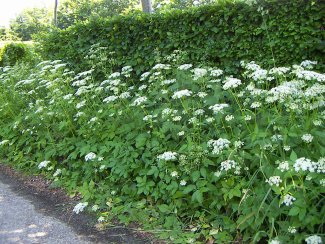Asia-Temperate
Caucasus: Azerbaijan; Georgia; Russian Federation-Ciscaucasia - Ciscaucasia
Middle Asia: Kazakhstan; Kyrgyzstan
Siberia: Russian Federation-Eastern Siberia - Eastern Siberia; Russian Federation-Western Siberia - Western Siberia
Western Asia: Turkey
Europe
Eastern Europe: Belarus; Estonia; Latvia; Lithuania; Moldova; Russian Federation-European part - European part; Ukraine - Krym
Middle Europe: Austria; Belgium; Czech Republic; Hungary; Netherlands; Poland; Slovakia; Switzerland
Northern Europe: Denmark; Finland; Norway; Sweden
Southeastern Europe: Albania; Bosnia and Herzegovina; Croatia; Greece; Italy; Macedonia; Montenegro; Romania; Serbia; Slovenia
Southwestern Europe: France
"Most leaves are basal, with the leafstalk attached to an underground stem, or rhizome. The leaves are divided into three groups of three leaflets, making it 'triternate.' The leaflets are toothed and sometimes irregularly lobed. Foliage of the 'wild' type is medium green in color. Small, white, five-petaled flowers are produced in mid-summer. Flowers are arranged in flat-topped clusters (called compound umbels) and are held above the ground on a leafy stem up to about 3 feet tall. The seeds are small and elongate, similar in size and shape to carrot seeds, and ripen in late summer." (Plant Conservation Alliance)
Goutweed was apparently first brought to North America as an ornamental during the early stages of European settlement and was well established in the U.S. by 1863. In parts of Russia, the leaves are sometimes used as a salad ingredient and potherb in the spring." (Plant Conservation Alliance)
